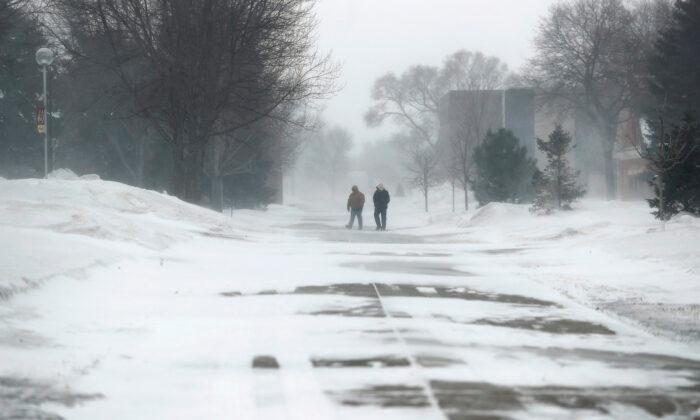An Arctic cold front is set to slide southward into the Northern Plains and Midwest this week, bringing freezing cold temperatures along with it.
So far this winter, most people across the northern Plains, Midwest, and Great Lakes have enjoyed relatively mild conditions for this time of year.
However, temperatures will reportedly reach about 10-20 degrees below average from the northern and central Plains on Feb. 13, and into the Ohio Valley and Interior New England/Lower Great Lakes by Feb. 14, just in time for Valentine’s.
However, the cold air is only set to linger for about 40 hours across Minnesota, and milder conditions are expected by the weekend across the Plains and Midwest.
By Feb. 14, it will be 20 to 30 degrees warmer on compared to Thursday in much of the northern and central Plains and parts of the Mississippi Valley, according to Weather.com.
In addition to blizzard conditions, the NWS said a “long stretch” of winter weather advisories stretch from Oklahoma to Maine, which is expecting 2-5 inches of snow along with some freezing drizzle.
Blizzard conditions created travel issues along the central and southern Red River Valley in North Dakota on Feb. 12, where the state’s Department of Transportation said Interstate 29 was closed from the South Dakota border to the Canadian border.
Several areas, including Minneapolis, St. Louis, Indianapolis, Albany, New York, and Burlington, Vermont, could well experience their coldest temperatures of the season so far and windy conditions are also possible, making it feel even colder.
Meanwhile, more heavy rainfall and the potential of flash flooding continues across several states from the southeast United States to the Ohio Valley.





